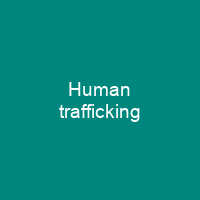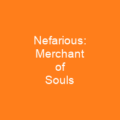Understanding Human Trafficking: A Global Crisis
Human trafficking is a dark reality that plagues our world, shrouded in the shadows of modern slavery. It’s an issue that transcends borders and affects millions of individuals every year. But what exactly does it mean to be trafficked? How can something so horrific happen in today’s society?
The Scope of Human Trafficking
According to estimates, 27 million people worldwide are victims of human trafficking, with millions more at risk. This is a staggering number that highlights the scale of this global crisis. The International Labour Organization (ILO) further emphasizes the gravity of the situation by stating that 14.2 million individuals are exploited for labor, while another 4.5 million face sexual exploitation.
Exploitation and Exploited
The forms of exploitation vary widely but often include forced labor, sexual slavery, and other commercial sex activities. These practices are not only illegal but also a grave violation of human rights. The UN Protocol to Prevent, Suppress and Punish Trafficking in Persons defines it as the recruitment, transportation, or harboring of individuals for such purposes.
The Impact on Victims
Victims of human trafficking face unimaginable suffering. They are often subjected to extreme control, psychological stress, threats, fear, physical and emotional violence. The long-term impacts can be devastating, leading to complex trauma involving depression, anxiety, self-hatred, dissociation, substance abuse, and despair.
Children in Crisis
Children make up a significant portion of trafficking victims—up to one-third according to some estimates. They are particularly vulnerable due to their age and the nature of exploitation they face. Child labor, forced marriage, and sexual exploitation are just a few of the ways children can be trafficked.
The Global Response
Efforts to combat human trafficking have gained momentum over the years. Governments, NGOs, and international organizations have launched various initiatives aimed at raising awareness, providing support, and enforcing laws against this crime.
International Efforts
The United Nations has played a crucial role in addressing human trafficking through its protocols and conventions. The UN Office on Drugs and Crime (UNODC) supports anti-trafficking efforts globally, while the United States established the Department of State’s Office to Monitor and Combat Trafficking in Persons.
Technology and Awareness
The rise of technology has both facilitated human trafficking and provided tools for law enforcement. Online platforms like Craigslist and Facebook have been used by traffickers but are also being leveraged by anti-trafficking organizations to detect cases more effectively.
Criticism and Challenges
While progress has been made, the fight against human trafficking is far from over. Critics argue that statistics can be unreliable, and the concept of human trafficking itself can be misleading. Some contend that anti-trafficking efforts often conflate trafficking with prostitution and fail to recognize the complex realities faced by victims.
Addressing Myths
Myths about human trafficking abound, including the idea that all victims are physically abused or that sex is a necessary component of trafficking. These misconceptions can hinder effective responses and support for survivors.
A Call to Action
The battle against human trafficking requires a multifaceted approach. From raising awareness to supporting survivors, every effort counts in the fight for freedom. As we continue to grapple with this global issue, let us remember that each victim is a person with a story and a right to live free from exploitation.

Together, we can make a difference. By understanding the complexities of human trafficking and working towards comprehensive solutions, we can bring hope to those who have been trafficked and ensure that such atrocities are no longer tolerated in our world.
Conclusion: The fight against human trafficking is not just about numbers or laws; it’s about recognizing each victim as an individual with a story. By addressing the root causes and supporting survivors, we can work towards a future where freedom prevails over exploitation.
You want to know more about Human trafficking?
This page is based on the article Human trafficking published in Wikipedia (retrieved on February 27, 2025) and was automatically summarized using artificial intelligence.






